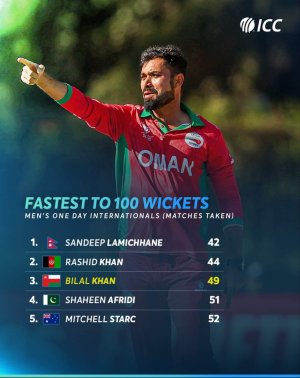Instead of running around each of our confirmation biases, where in each person would state or quote a performance which is etched in memory or which is special to him/her, i wonder if there was ever an exercise done where in genuine research was done into this and weightage was assigned to each performance to determine which is the greatest performance ever, and GUESS WHAT? This has already been done. Without wasting much time, I present you ex Wisden statistician and wizard with numbers Anantha Narayanan (who has in the past come up with the top 10 test batting and bowling performances).
I intend to do that in this article. To do that I have coined a new term called SVI (Spell Value Index). This will be determined by using the following four parameters. By ‘Spell’, I mean the complete bowling effort in the innings.
The RpAI (Runs per Adjusted Innings) of the dismissed batsman.
Notionally, how many runs were saved by the subject dismissal? Applicable only if the batsman was dismissed below his RpAI.
The absolute bowling run-rate (RpO).
The bowling run-rate, relative to the team bowling run-rate.
Even though this is an article on ODI bowlers, the cornerstone of this piece is a new measure that I have developed for batsmen: The RpAI, which is described in a separate box. It is a simple but very important derivation and readers should understand it well.
If career-to date figures are to be used, then I would have to use either the batting average or the RpI, with their inherent deficiencies. Hence, the career RpAI is used to determine the quality of the batsman. The number of wickets captured does not come in directly. However, it is in the picture indirectly through the first two parameters. This method is recognition of the following facts.
The wicket of a top-order batsman is more valuable than that of a lower-order batsman.
The dismissal of a top-order batsman at, say, 5 is far more valuable than when he is dismissed at, say, 116.
Per se, it is essential to reward bowling accuracy, through the absolute value.
However, the importance of relative accuracy has to be recognised. A bowling spell in which the bowler has conceded 5 runs per over in an innings, where the other bowlers have conceded, say, 7 runs per over, is more valuable than a bowling spell in which the bowler has conceded 4 runs per over in an innings, where the other bowlers have conceded, say, 3 runs per over.
This is the top 10 which has been calculated with the above formula. Obviously you can disagree with it (and most people would), but if you do not have data to back your claim, 9 times out of 10 it may not hold good.
Sno ODI# ICC Bowler Team Vs Analysis SVI
1 2438 IC-2006 M Ntini South Africa Pak 6.0-2-21-5 70.3
2 2428 IC-2006 MF Maharoof Sri Lanka Win 9.0-2-14-6 69.2
3 3894 IC-2017 Mohammad Amir Pakistan Ind 6.0-2-16-3 67.5
4 2441 IC-2006 KD Mills New Zealand Aus 10.0-1-38-4 64.5
5 3881 IC-2017 M Morkel South Africa Pak 7.0-1-18-3 62.3
6 2430 IC-2006 KD Mills New Zealand Saf 6.0-0-18-3 61.4
7 2894 IC-2009 GC Tonge West Indies Pak 10.0-3-25-4 59.2
8 2428 IC-2006 WPUJC Vaas Sri Lanka Win 6.0-2-6-2 58.6
https://www.sportstarlive.com/magazine/evaluating-odi-bowling-spells/article19882830.ece








 )
)


